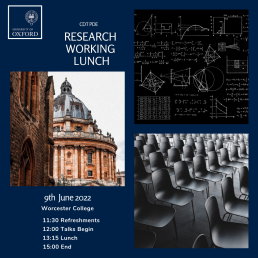Fluid-structure interaction (FSI) problems arise in many applications. The widely known examples are aeroelasticity and biofluids.
In biofluidic applications, such as, e.g., the study of interaction between blood flow and cardiovascular tissue, the coupling between the fluid and the
relatively light structure is {highly nonlinear} because the density of the structure and the density of the fluid are roughly the same.
In such problems, the geometric nonlinearities of the fluid-structure interface
and the significant exchange in the energy between a moving fluid and a structure
require sophisticated ideas for the study of their solutions.
In the blood flow application, the problems are further exacerbated by the fact that the walls of major arteries are composed of several layers, each with
different mechanical characteristics.
No results exist so far that analyze solutions to fluid-structure interaction problems in which the structure is composed of several different layers.
In this talk we make a first step in this direction by presenting a program to study the {\bf existence and numerical simulation} of solutions
for a class of problems
describing the interaction between a multi-layered, composite structure, and the flow of an incompressible, viscous fluid,
giving rise to a fully coupled, {\bf nonlinear moving boundary, fluid-multi-structure interaction problem.}
A stable, modular, loosely coupled scheme will be presented, and an existence proof
showing the convergence of the numerical scheme to a weak solution to the fully nonlinear FSI problem will be discussed.
Our results reveal a new physical regularizing mechanism in
FSI problems: the inertia of the fluid-structure interface regularizes the evolution of the FSI solution.
All theoretical results will be illustrated with numerical examples.
This is a joint work with Boris Muha (University of Zagreb, Croatia, and with Martina Bukac, University of Pittsburgh and Notre Dame University).



